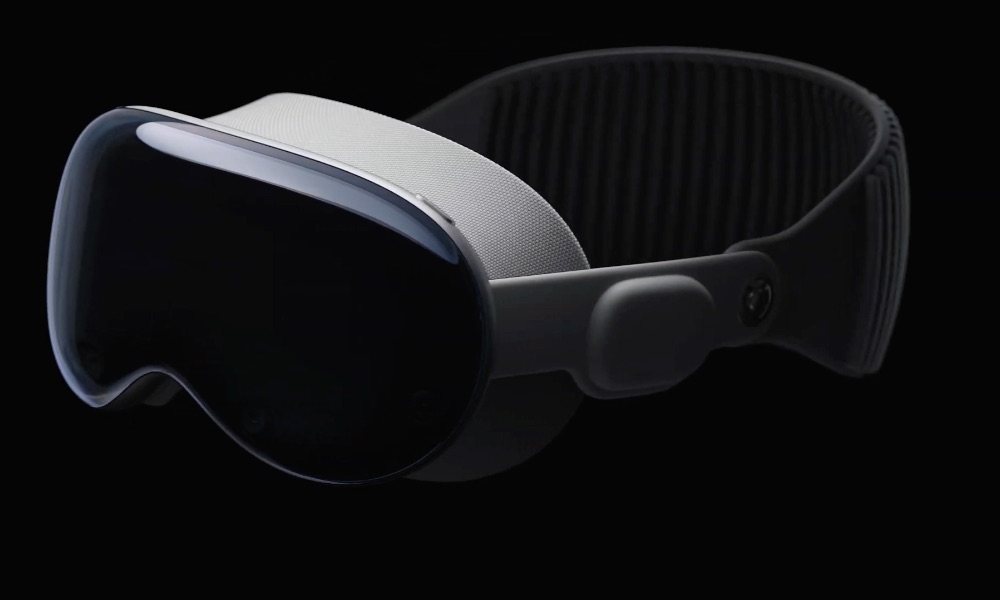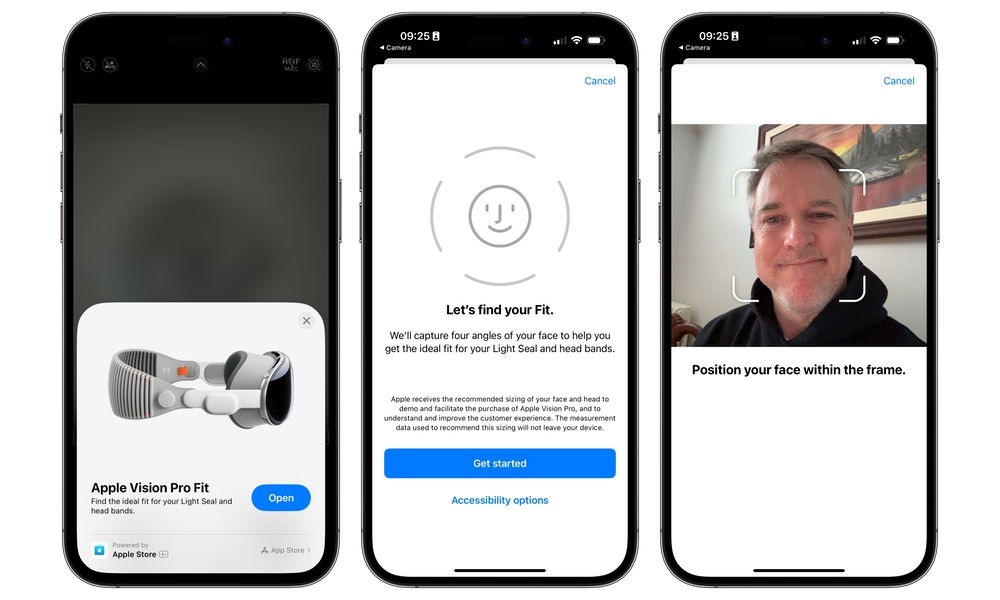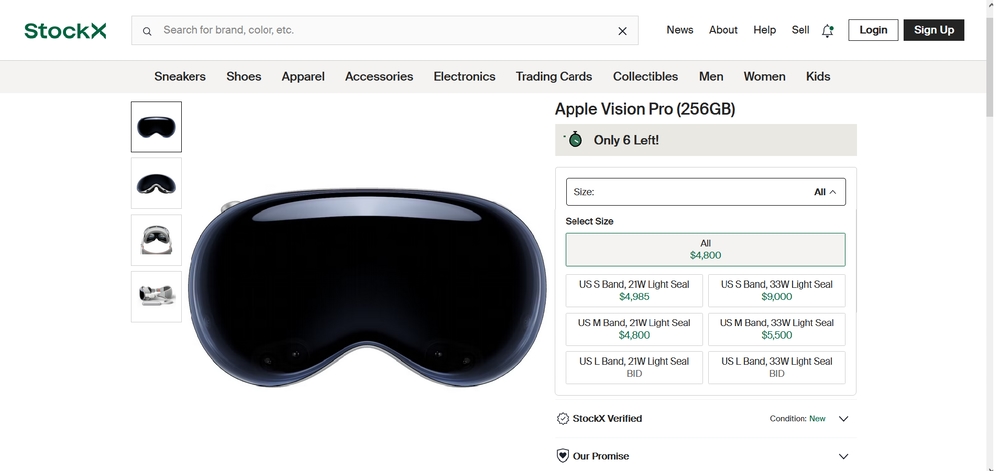Thousands of Apple Vision Pro Headsets Were Scooped up by Bots

Toggle Dark Mode
Although recent reports have estimated that Apple sold as many as 180,000 Vision Pro headsets during launch weekend, it turns out that not all of those sales may have been made to actual humans.
While those early estimates suggested that the $3,500+ headset was wildly popular among early adopters, the actual sales numbers were never entirely clear to begin with and were primarily based on educated guesses by analysts like Ming-Chi Kuo, who compared sell-out times to predicted initial stock levels.
However, even if those numbers are accurate, it seems not every Vision Pro went to an eager customer — many were snapped up by scalpers hoping to make a profit by selling the flagship product on sites like eBay.
A new report today from Kasada, a company that works to fight against automated bots on the internet, paints a new picture of the pre-order weekend, noting that bots were used to “successfully pre-order thousands of the Apple Vision Pro 256GB.”
As Kasada notes, “botters” were already setting things up well before launch weekend, with “confirmed pre-order” Vision Pro headsets appearing on eBay and elsewhere with absurdly high markups — up to $5,999 for a 256GB model that otherwise sold for $3,499 directly from Apple.
Not surprising, the Apple Vision Pro sold-out almost immediately for those seeking online ordering and delivery. Those available for in-store pickup took a little longer before being sold-out. Kasada threat research identified notable botting activities during the pre-sale whereby several thousand were found to be purchased successfully by bots.Kasada
The folks at Kasada also added that they “observed chatter within the botting communities about their interest in the Apple Vision Pro” over the past month, with developers getting bots ready to tackle Apple’s pre-order site and others selling “all-in-one” (AIO) bots for scalpers who wanted to get ahead of the game.
According to the research team, the Apple Vision Pro appeared to be a lucrative target due to the expectation that demand would outpace supply — a common theme among scalpers — plus the ability to add a much higher markup than usual. Apple’s flexible return policy also factored in since scalpers would return any unsold inventory within 14 days for a full refund, making it a low-risk proposition.
While the Kasada post doesn’t mention this, limited US availability was likely another consideration since those outside of the US have no way of ordering the Vision Pro directly from Apple. On the other hand, sellers on secondary marketplaces, like eBay, can ship to any country around the globe. While those buying a US Vision Pro will encounter a few frustrating limitations, there are likely many folks around the world who are eager enough to get their hands on Apple’s new spatial computing headset to be willing to live with the quirks of having to use a US-based Apple ID.
We saw a similar trend among scalpers and online eBay sales when the original iPhone came along in 2007; although bot technology wasn’t nearly as sophisticated in those days, so many of the scalpers had to purchase iPhones the old-fashioned way. However, this continued even after later international releases. In the days when people lined up in front of Apple Stores to grab the latest iPhone, it wasn’t at all uncommon for scalpers to pay dozens of “customers” to stand in line to buy as many iPhones as possible on their behalf.
Face ID Not a Deterrent
Surprisingly, the need to scan a customer’s face to ensure a proper fit for the Light Seal and headband turned out to be little more than a minor speed bump for the bots used by scalpers.
Some folks like ZDNet’s Artie Beaty speculated that Apple might use facial recognition technology as a way to combat scalpers:
Why is Apple doing this? A face scan to ensure fit sounds useful, but if pre-order is as competitive as expected, those seconds or even minutes will matter. There’s a fair chance, I think, that this is just a measure to fight scalpers looking to scoop up the devices and resell them at a premium, thereby effectively locking out non-Apple users from making their first foray into the Apple ecosystem.Artie Beaty
However, this ultimately turned out not to be the case. Contrary to what some predicted, the facial scan was not linked to an Apple ID but could be brought up on any iPhone with the Apple Store app installed simply by scanning an app clip. This allowed even legitimate buyers to use a friend’s iPhone to order a Vision Pro, but it also meant that the bots had one less hoop to jump through.
Face ID was not used primarily to stop bots (or multiple purchases), it appears as though it was more about the fit.Kasada
With Apple’s stance on privacy, it’s unsurprising that it probably didn’t want to deal with doing any kind of advanced facial recognition. The facial scan done by the iPhone’s TrueDepth camera was precisely what it appeared to be — a measurement to ensure a proper fit for the accessories. Not only does Apple avoid storing any facial scan data, but in line with its usual privacy policies, it doesn’t even upload the facial scan to its servers. Instead, the necessary calculations are done locally, with only a “face scan value” sent to Apple.
This made it trivial for bot developers to bypass this check. In one example supplied by Kasada, a developer hardcoded their own face scan value, while others used multiple values to order different configurations.
Of course, this also means that anybody purchasing a Vision Pro from a secondary market like eBay would be stuck with whatever size the scalper had ordered, which is another reason to do this at your own risk. While Apple sells the Light Seal separately in all available sizes, that will set you back another $199. Then again, someone willing to shell out 70% more than retail price for an Apple Vision Pro on eBay, probably isn’t too worried about spending another 200 bucks.
Scalpers are advertising Vision Pro models with varying band and Light Seal sizes labelled the same way that Apple does on its pre-order checkout page. This makes it reasonably easy for somebody to find a match by going through the Vision Pro ordering process and seeing what lands in their Apple Store cart. The same face scan process is also used when ordering the Light Seal separately.
However, prices appear to vary widely between different configurations. For example, Kasada found a listing on StockX that showed a Vision Pro with a small headband and 21W Light Seal listed for $4,985, while the same model with a 33W Light Seal had an asking price of $9,000.
The reason for these differences is unclear, but it could be related to stock levels at Apple, which the bots are also capable of quickly measuring. Configurations with longer shipping times should logically be able to fetch higher prices from those who don’t want to wait.
The bots were also able to circumvent the normal limits that Apple places on purchases from a single Apple ID. For example, Kasada found “one bot was used to successfully check out 1,592 Vision Pro pre-orders.”
With scalped Vision Pro headsets going for an average markup of $2,500 above MSRP, Kasada estimates that one bot would provide scalpers with about $4 million in profit if they could sell that entire inventory.
However, while thousands of Vision Pro headsets were purchased using bots, each individual scalper appears to have picked up fewer units than they do for other products like the iPhone. Part of that was the higher selling price of each unit, but the custom sizing requirements also complicated things.
While the bot-powered scalpers are hoping to make big bucks from reselling the Vision Pro, how well this will work out for them remains to be seen. While shipping dates on some Vision Pro models have been pushed into April, that’s not universally the case, as it varies between storage capacities and Light Seal and headband configurations. Plus, the Vision Pro launches in stores on February 2, where there will almost certainly be some stock available for purchase by walk-in customers.









